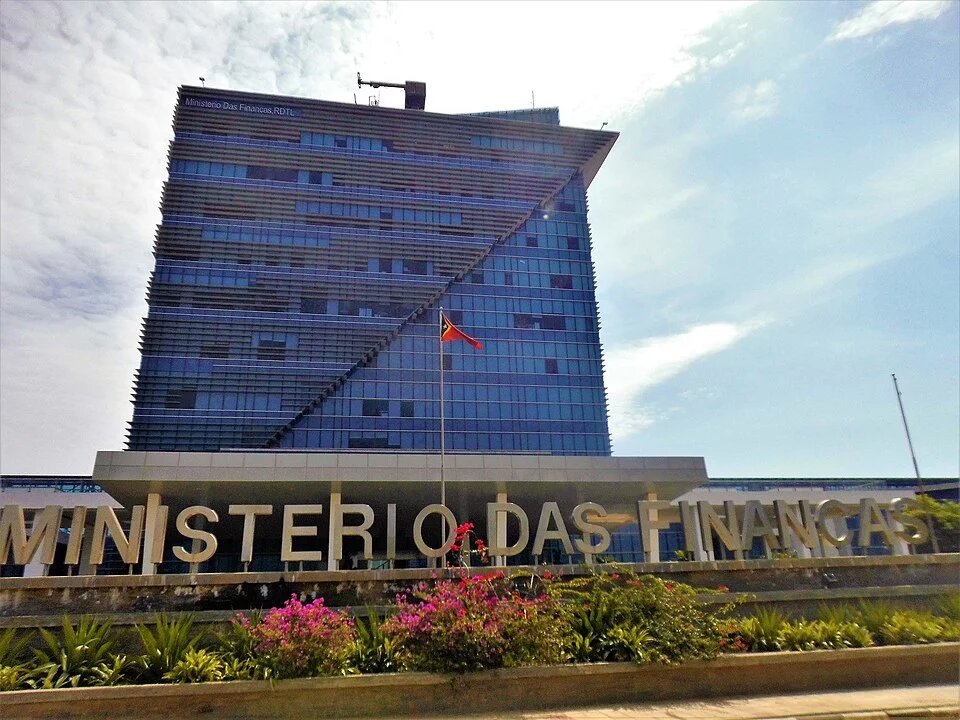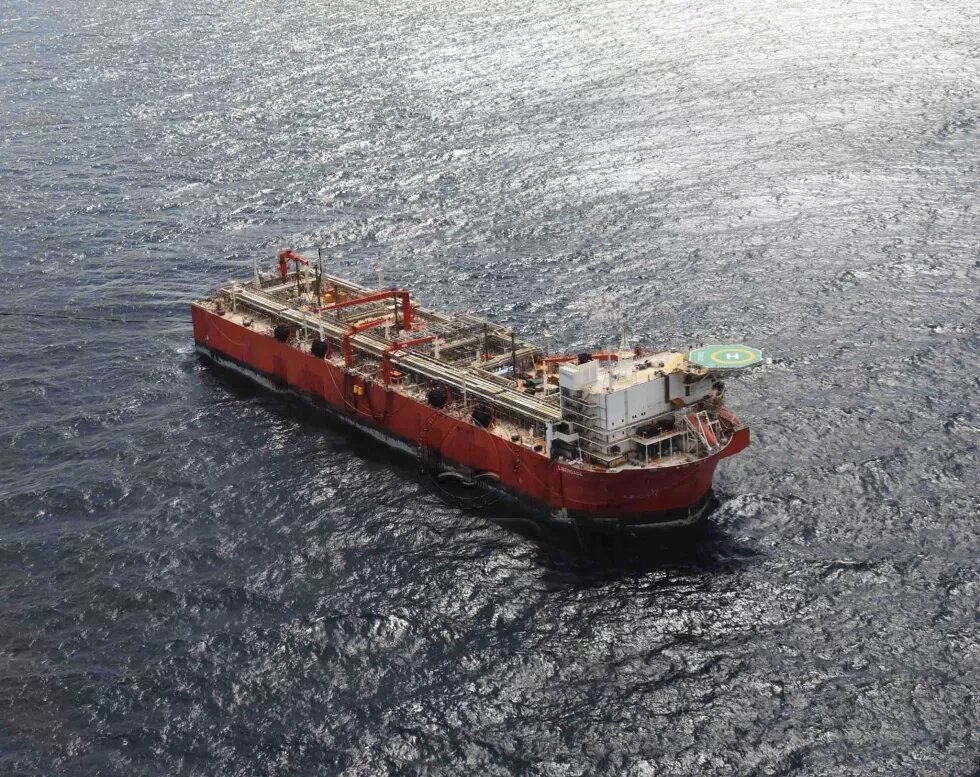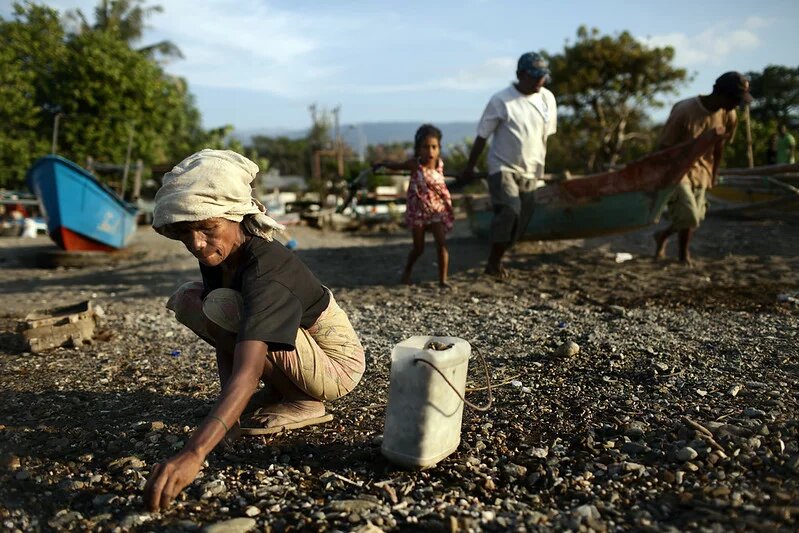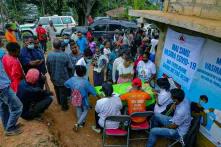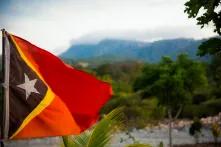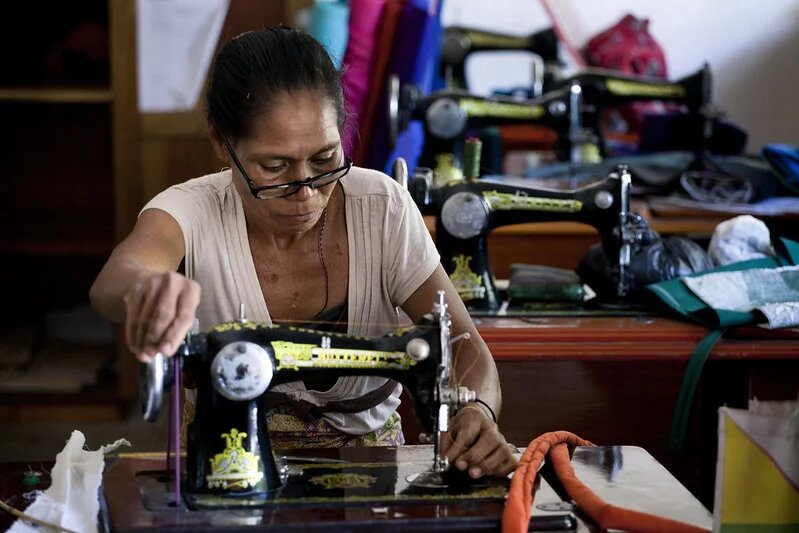
Since the restoration of independence, the petroleum sector is the dominant sector in Timor-Leste’s economy and for state revenue. While petroleum income enables the government to finance its development needs, it also poses significant challenges for public policy and public institutions in terms of its management.
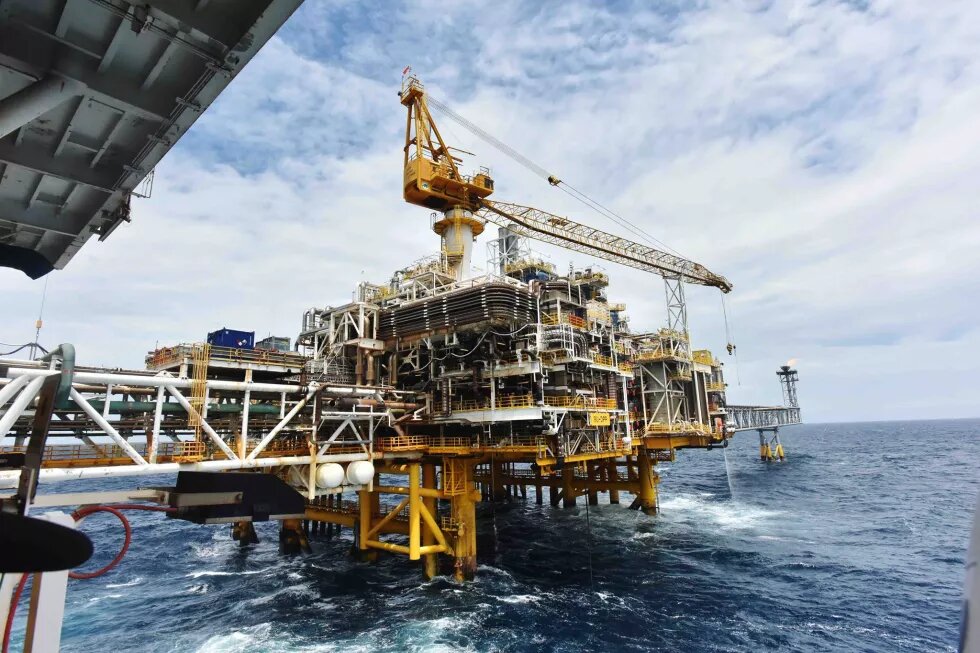
Statistically speaking, the petroleum sector accounts for approximately 70% of Timor’s gross domestic product (GDP) and more than 90% of the total exports, as well as more than 80% of the state’s annual revenue. Like many other countries, massive revenues from the petroleum sector poses significant threats to the economy and its public institutions on how to manage it wisely and prudently. The term ‘resource curse’ or ‘paradox of plenty’ is widely used to capture the social, political and economic problems caused by the dependence on petroleum is partly the result of the temptation posed by easy money, and misguided policy of the government to address these problems.
For Timor-Leste, petroleum revenues shape the characteristics of the state, its interaction with the wider community, and the quality of the state institutions. The term ‘rentier state’ is frequently used to describe this complex and multifaceted situation. Timor-Leste’s experiences are more delicate and complex given that the country began to receive massive revenues from the petroleum when its non-oil and formal sector was in its nascent phase, with its human capital still low and many important institutions not yet in place, concurrently with massive development needs. For the economy overall, relatively speaking, the revenues received from the petroleum sector makes the non-oil sector smaller and less significant in the overall economic structure.
Intentions of the Petroleum Fund and its limits
The Petroleum Fund Act, established in 2005, is a centerpiece of policy measures adopted by Timor-Leste’s government to mitigate negative impacts associated with natural resources. Modelled on the Norwegian Government Pension Fund, the intention of the fund’s creation was to minimize the social, economic and political malaises associated with the abundance of natural resources. According to the Public Consultation Discussion Paper for establishing the fund, the petroleum fund “can be a useful tool for a wise management of the Petroleum Fund Revenues, and sound fiscal revenues.” (Executive Summary, p. 4, Ministry of Planning and Finance, 2004) In theory, the fund is an independent fund from the government’s annual spending, and the government will only tap into the fund to finance its annual spending when domestic revenues are insufficient, with the approval from parliament. The government is also required by law to provide justification for any withdrawals.
Estimated sustainable income (ESI) is an important feature of the Petroleum Fund Act. It sets the limit on government withdrawals from the fund so it should not exceed 3% (annually) of the estimated petroleum wealth. The underlining assumption is that the government will only use the investment return from the sovereign fund but the value of the capital remains. This is the basis of intergenerational equity, by which the consumption of the current generation will not impact upon future generations.
Since its establishment up to now, the fund has been instrumental to overall petroleum revenues management, its fiscal policy and public finance management, and to Timor-Leste’s overall social and economic development. Between 2005 and mid-2021, the petroleum fund received more than USD 23 billion from revenues and generated more than USD 8.9 billion in investment return. In the meantime, USD 13 billion has been transferred to finance the state’s annual spending. On average, withdrawals from the fund accounts for roughly more than 80% of the state’s annual spending.
At the current state of Timor-Leste’s development, given the small scale of private sector investment, public spending has been the principal driver of economic growth and social development. Roughly more than 30% of the state’s annual spending are allocated to improve key infrastructure such as electricity, roads, ports and airports, and rural and other infrastructure. Through the state’s annual spending, the government has also financed the expansion of social investment programs, such as furthering access to education, health, community housing, and social safety net programs.
The existence of the fund continues to be pivotal as Timor-Leste faces the social and economic impacts caused by COVID-19 and natural disasters. The fund enables the government to adopt a wide-range of social and economic policy measures. For example, during the pandemic these included household cash transfers, a ‘food basket’ program, job retention, and credit moratoriums. These policy measures have helped to minimize social and economic impacts caused by the recent pandemic.
Development aspirations with high public spending
While easy money from petroleum enables the government to finance its development programs and the petroleum fund prolongs petroleum revenues for a certain period, it does not erase the social, economic and political problems associated with petroleum. Timor-Leste in many ways falls into temptation posed by easy money. This has resulted in high public spending relative to the domestic economy, which according to the World Bank’s estimation, had public expenditure equivalent to about 86% of GDP between 2008 and 2019. Although the Petroleum Fund Act sets the withdrawal limit at 3% of estimated sustainable income (ESI), in reality the government’s withdrawal has reached up to 5% percent annually since 2009. As reminded by the well-known local think tank La’o Hamutuk in 2005, the establishment of the fund is a noble idea but it takes more than that to address complex and systemic problems posed by easy money.
Economically speaking, the challenges for an economy that relies on natural resources such as oil is that although it generates massive revenues for the state, it has very minimum direct impact on the local economy and for people in terms of employment and income. In this context, it puts pressure on public spending, since it is the only mechanism that facilitates the oil sector with the local economy. Henceforth, over a decade, significant resources have been allocated to improve infrastructure and expand access to education and health through to the remote areas of the country.
Nevertheless, 20 years after the restoration of independence, Timor-Leste still heavily relies on the transfer from the petroleum fund to finance the state’s annual spending, and the domestic economy still relies heavily on public spending. This reality raises wider concerns about fiscal and economic sustainability. The irony of Timor-Leste is that it is a “petro-state that does not have much petrol”. The petroleum sector is dominant in Timor’s economy, particularly the state’s revenues, but rather than being an indicator of a petroleum-rich country, in reality it has an under-developed non-oil economy. With the current level of spending, it is predicted that its sovereign fund will dry up within about a decade. Such a reality raises wider concern in the public about the risk path Timor-Leste is taking.
The government’s strategy succeeded to drive the non-oil sector to grow between 2008 and 2016, but this has not led to changes in economic productivity, particularly in the agriculture sector. High public spending also drives the public sector to grow exponentially compared to other productive sectors to become the dominant sector in the economy. This service sector, largely concentrated in Dili, has grown exponentially compared to the rural economy.
The most important indicator is the relationship between public spending and the improvement of citizens’ well-being. Despite high public spending enabled by the petroleum revenues, Timor-Leste still faces tremendous challenges in terms of improving citizens’s lives, including addressing different forms poverty and inequality, creating a strong foundation for sustainable and inclusive growth, creating an economic system with sufficient employment opportunities for its youth, and improving the quality of public services. Political deadlock and the COVID-19 pandemic have worsened the situation. The economic decline that took place between 2017–2020 brought Timor-Leste’s GDP back to its 2013 level, equivalent to a seven-year loss. The small and newly private sector are also suffering as their income declines significantly. This in turn affects jobs and income losses for families. These challenges are shared by everyone across different segments of society.
Toward economic diversification and its challenges
Due to these various challenges and high dependence on the petroleum sector, there is recognition that Timor-Leste needs to urgently diversify its economy. Economic diversification has been used widely to capture that intention and the urgent needs to develop non-oil sectors; primarily agriculture, tourism, and manufacturing. Agriculture in particular is critical for the country’s inclusive and sustainable development as according to the most recent data, 66% of families rely on agriculture and more than 50% of poverty is concentrated in agricultural households. Tourism is another key sector for the country in terms of promoting entrepreneurship, job creation, and poverty reduction.
The pandemic and public health measures adopted by the government to curtail the spread of coronavirus also further exposes various forms of vulnerability already present in Timor-Leste’s economy. This became another wake-up call requiring the government’s attention and the urgent need to diversify and change the structure of the economy. Realizing this, in 2020, the government established an Economic Recovery Commission, under the Prime Minister’s Office. The Commission then recommended several policy measures to transform economic structures, job creation, consolidating public investment and economic growth.
While economic diversification has become a dominant public discourse over the last decade, the problems center on resource allocation, policy choices, and the institutional setting. The most popular criticism is that while the government frequently states its intention to diversify the economy, this has not translated into resource allocation. For example, agriculture, which is the source of livelihood for around 70% of the population, receives hardly 2% of the total annual budget. The budget share for other productive sectors such as tourism and manufacturing are also still below 3%. Public investment in education also continues to be lower in the regional context.
The presence of the easy money in the petroleum fund also alters policy choices of the government. Financing is easier but combined with limited institutional capacity, the availability of funds limits policy choices to be centered around money, and money can purchase everything. This then undermine efforts to explore other policy options and choices that are less costly but more sustainable. Furthermore, temptations posed by easy money also places significant pressure on public institutions to spend as quickly as possible. In many ways, this leads to misallocation of resources, particularly the state spending, or ‘spending without thinking’ behavior. While public institutions are under pressure to deliver quickly, they tend to resort to money as the solution to everything. The combination of these erode the quality of public institutions and changes the economic incentives in society.
The political aspect also plays a key role. Observers point out that the absence of the consensus among the major political powers on the long-term investment and political disharmony among them have been major constraints to diversify the economy. Furthermore, having petroleum money also allows the government to focus its attention and resources on the large scale infrastructure projects that make government action visible. In the meantime, it also argued that the question of who controls the petroleum wealth also dictates the ongoing political tension among different actors. The political impasse since 2017 and ongoing political rhetoric have also adversely affected the efforts to diversify the economy and promote private sector investment.
Conclusion
Timor-Leste’s experiences dealing with oil money clearly shows that while having petroleum money allows the government to finance its development, this alone cannot solve all the complex and multifaceted challenges that Timor-Leste is facing. Instead, it poses different issues to policymakers: easy spending, pressure over the institutions to spend it quickly, eroding quality of institutions, misguided policy and misallocation of resources, and competition over resources and political impasse. The combination of these in turn undermines the efforts to economic diversification and a long-term development trajectory.
__
Guteriano Neves is an independent policy analyst, based in Dili. His areas of expertise are political economy, “resource curse” and petroleum dependency, and foreign aid.
The views expressed by the author are not necessarily those of Heinrich Böll Stiftung.
